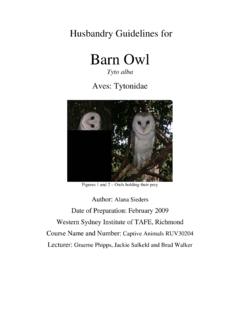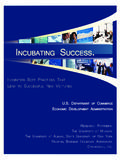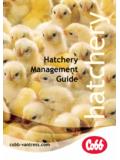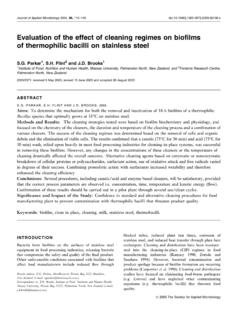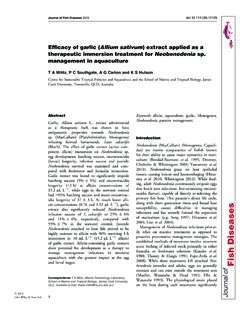Transcription of Husbandry Manual For Black Headed Python …
1 Husbandry Manual For Black Headed Python Aspidites melanocephalus (Reptilia: Boidae). Compiler: Chris Mann Date of Preparation: Western Sydney Institute of TAFE, Richmond Course Name and Number: Lecturer: Graeme Phipps/Andrew Titmuss/Jacki Salkeld TABLE OF CONTENTS. 1 5. 2 TAXONOMY .. 6. NOMENCLATURE .. 6. SUBSPECIES .. 6. RECENT SYNONYMS .. 6. OTHER COMMON NAMES .. 6. 3 NATURAL HISTORY .. 7. MORPHOMETRICS .. 7. Mass And Basic Body Measurements .. 7. Sexual 7. Distinguishing 8. DISTRIBUTION AND HABITAT .. 8. CONSERVATION STATUS .. 8. DIET IN THE WILD .. 8. LONGEVITY .. 9. In the Wild .. 9. In Captivity .. 9. Techniques Used to Determine Age in 9.
2 4 HOUSING REQUIREMENTS .. 10. EXHIBIT/ENCLOSURE DESIGN .. 10. HOLDING AREA DESIGN .. 11. SPATIAL REQUIREMENTS .. 11. POSITION OF ENCLOSURES .. 12. WEATHER 12. TEMPERATURE REQUIREMENTS .. 12. SUBSTRATE .. 12. NESTBOXES AND/OR BEDDING MATERIAL .. 12. ENCLOSURE FURNISHINGS .. 12. 5 GENERAL 14. HYGIENE AND CLEANING .. 14. RECORD KEEPING .. 14. METHODS OF IDENTIFICATION .. 15. ROUTINE DATA COLLECTION .. 16. 6 FEEDING 17. CAPTIVE DIET .. 17. SUPPLEMENTS .. 17. PRESENTATION OF FOOD .. 18. 7 HANDLING AND TRANSPORT .. 19. TIMING OF CAPTURE AND HANDLING .. 19. CATCHING BAGS .. 19. CAPTURE AND RESTRAINT TECHNIQUES .. 19. WEIGHING AND EXAMINATION.
3 19. TRANSPORT REQUIREMENTS .. 20. Box 20. Furnishings .. 20. Water and Food .. 20. 2. Animals per 20. Timing of Transportation .. 20. Release from Box .. 20. 8 HEALTH REQUIREMENTS .. 21. DAILY HEALTH CHECKS .. 21. DETAILED PHYSICAL EXAMINATION .. 21. Chemical Restraint .. 21. Physical Examination .. 22. ROUTINE TREATMENTS .. 22. KNOWN HEALTH PROBLEMS .. 22. QUARANTINE 27. 9 BEHAVIOUR .. 29. ACTIVITY .. 29. SOCIAL BEHAVIOUR .. 29. REPRODUCTIVE BEHAVIOUR .. 29. BATHING .. 29. BEHAVIOURAL PROBLEMS .. 30. SIGNS OF STRESS .. 30. BEHAVIOURAL ENRICHMENT .. 30. INTRODUCTIONS AND REMOVALS .. 31. INTRASPECIFIC COMPATIBILITY .. 31. INTERSPECIFIC 31.
4 SUITABILITY TO CAPTIVITY .. 31. 10 BREEDING .. 32. MATING 32. EASE OF BREEDING .. 34. REPRODUCTIVE CONDITION .. 34. Females .. 34. 34. TECHNIQUES USED TO CONTROL BREEDING .. 34. OCCURRENCE OF HYBRIDS .. 34. TIMING OF 34. AGE AT FIRST BREEDING AND LAST BREEDING .. 35. ABILITY TO BREED EVERY YEAR .. 35. ABILITY TO BREED MORE THAN ONCE PER YEAR .. 35. NESTING, HOLLOW OR OTHER 35. BREEDING 35. INCUBATION PERIOD .. 36. CLUTCH 36. AGE AT WEANING .. 36. AGE OF REMOVAL FROM PARENTS .. 36. GROWTH AND DEVELOPMENT .. 37. 11 ARTIFICIAL REARING .. 38. INCUBATOR TYPE .. 39. INCUBATION TEMPERATURE AND HUMIDITY .. 42. DESIRED % EGG MASS LOSS.
5 43. HATCHING TEMPERATURE AND HUMIDITY .. 43. NORMAL PIP TO HATCH INTERVAL .. 43. DIET AND FEEDING ROUTINE .. 43. SPECIFIC REQUIREMENTS .. 44. DATA 44. IDENTIFICATION METHODS .. 44. 3. HYGIENE .. 44. BEHAVIOURAL CONSIDERATIONS .. 45. WEANING .. 45. 12 46. 13 47. 14 BIBLIOGRAPHY .. 48. 15 GLOSSARY .. 48. 16 APPENDIX .. 50. 4. 1 Introduction Black Headed Python (Kreft, 1864) Aspidites melanocephalus. The scientific name means Black Headed Aspidites . Aspidites translates to shield bearer and refers to the large scales on its head. (Pythons of the world: Australia by Barker &. Barker pg 1). The Black Headed Python belongs to the family boidae and like all pythons is non venomous and lays eggs.
6 It and the Woma (Aspidites ramsayi) are the only two species of the genus Aspidites and both are endemic to Australia. They are also the only Australian pythons that lack heat sensing pits on the rostral and labial scales or lips. This Python is extremely hardy in captivity and generally doesn't mind occasional handling. They have a placid nature although there are always exceptions. Black Headed pythons are becoming more common in captivity both in Australia and over seas. This is most likely due to its hardiness in captivity and the increasing number of studies and research being performed on the species. Also the increase of this snake in captivity may lead to better success in captive breeding.
7 OH&S: It is a fairly harmless species and cannot seriously harm or injure a person. Although it can bite and females can become more aggressive when incubating eggs. The Black Headed Python is capable of delivering a painful bite as this species has moderately long teeth and very powerful jaws. (Pythons of the world: Australia by Barker &. Barker pg 1). 5. 2 Taxonomy Nomenclature Class Reptilia Order Squamata Sub Order Serpentes Family Boidae Genus Aspidites Species melanocephalus Subspecies Aspidites melanocephalus adelynensis Aspidites melanocephalus davieii ( ). Recent Synonyms No recent synonyms Other Common Names Black Headed rock snake Tarpot (Pythons of the world: Australia by Barker & Barker pg 1).
8 6. 3 Natural History The genus Aspidites containing both the Black Headed Python and the woma is considered to be the most primitive of all Australia's pythons. Current opinion suggests this genus split quite early from other Australian pythons. They are unique as they lack labial heat sensing pits. It is thought that they once possessed them but gradually lost them over time. (Pythons of Australia: A Natural History by Geordie Torr ). Many studies have been done on the Black Headed Python in recent years as not much was previously known about their habits. Studies have been done on the Python 's digestive efficiency. It was found that Black Headed pythons have a lower digestive efficiency than most other Australian pythons.
9 (Pythons of Australia: A Natural History by Geordie Torr pg 20). Studies have also been done on its preferred body temperature during wet and dry seasons (Bedford 1996). The results showed that Black Headed pythons preferred a temperature of C during the dry season compared to C during the wet season. (Pythons of Australia: A Natural History by Geordie Torr pg 32). This means they have different preferred body temps during the year. This change in preferred body temperature could be recreated in captivity as it could stimulate certain types of behaviour. Black Headed pythons average total number of teeth is 90, which is the fewest of the Australian pythons.
10 (Pythons of the world: Australia by Barker & Barker pg 1). Morphometrics Mass And Basic Body Measurements Average total length metres Maximum total length metres Scales are in 50-65 rows at mid-body Number of ventral scales 315-355. Number of subcaudal scales 60-75. (Reptiles and Amphibians of Australia by Harold Cogger pg 601). The largest reported wild specimen measures cm in total length (Smith,1981). Retes (pers. comm.) reports a total length of a captive female to be 302 cm. Large captive specimens attain considerable girth and may weigh in excess of 16kg. (Pythons of the world: Australia by Barker & Barker pg 2). Sexual Dimorphism Adult male Black - Headed pythons are typically smaller than females, both in terms of weight and length.

